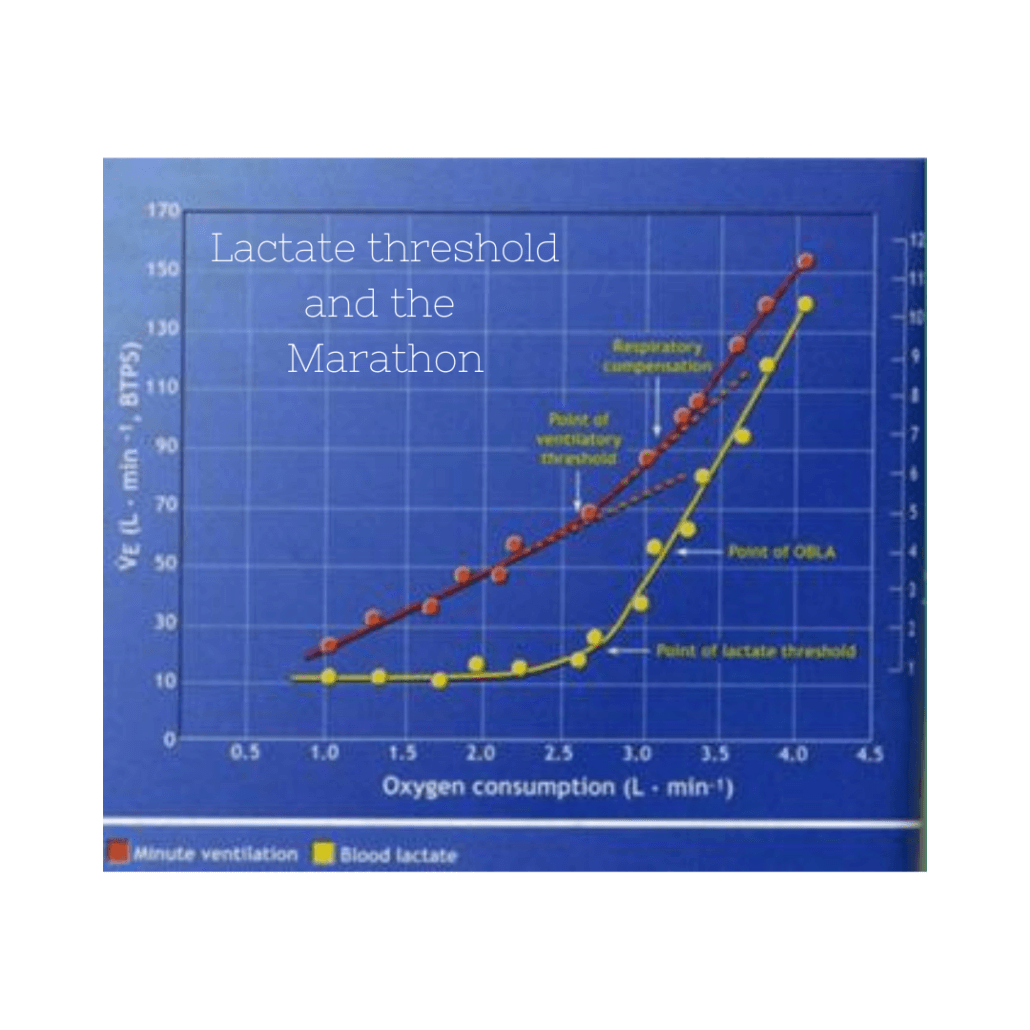Marathon Long Runs: Part 1

Podcast: Play in new window | Download
The marathon long run should seemingly be simple, right? Just go out and run a long way because our race is going to be over 26 miles! In its simplest form, yes, that’s about all there is to it. However, the marathon is a simple event on the outside, but when factoring in all the things that make running a successful one possible, we see there’s a lot more to it. Like fueling, central fatigue, pace, effort, the goal of the race, goal of the run, and on and on. For a lot of years, even today, runners are all about the 20+ milers. How many can we fit into our training plan? Ok, that’s fine but what else are we doing during the rest of the week? Doesn’t that matter too? I know we have discussed this before, so I won’t keep at it. The truth is, that we tend to compartmentalize our lives and our training. Everything is in our own little bubble and nothing else affects anything outside that bubble. The truth is, it’s all lumped together. It’s runny and intertwining. So, what I want to do today is explore the different variations of marathon long runs, where they would fit, and who should consider these.

However, first, I want to just touch on why the HMM method has worked for so many people. I won’t dive deep into it again. If you want a full discussion, please consider the book, or for a nutshell discussion, this blog post. However, the basic assumption is that training should be kept in balance so that all aspects needed can be trained. For most people and the mileage they are running, 16 miles works well. It’s about 25-30% of the weekly total and takes anywhere from 1:45:00 to 3:00:00 for most abilities. So, it’s a good middle ground. Now, going beyond that, or outside the long run bubble, it fits extremely well, because you are doing a marathon tempo on Thursday, an easy day Friday, then a longer 60-80 minute run on Saturday, finishing with a long run on Sunday. Not only that, but you come back and run easily on Monday and do a more intense workout on Tuesday. So, as you can see, there’s not any downtime before or after. That catches a lot of first timers off guard. I get a lot of emails from folks who said they’ve done a lot of 20 milers and are going to keep doing them during their first go-round with HMM. I urge you to reconsider that idea. If you haven’t done a plan that does what HMM does during the week, I’d really think about keeping that long run pretty basic. You will already be pushing up against that fine line of training hard and overtraining. The last thing you want to do is blow right past that line. Now, after saying all that, there’s a lot of different ways to adjust your long run depending on your ability or what your goal is.
Long Slow Distance
This is your traditional “easy” long run. The most basic development we are trying to build with this is our basic endurance. For a lot of people, it’s simply about being able to know that they can cover the distance, correct? This is why a lot of people tell me that they mentally need the 20 miler, so that they can feel confident that they can even cover the full distance. With this run, we are building the foundation of endurance performance through the same adaptations we would build with an easy run. We also prepare our muscles, tendons, and bones to be able to handle the demands of running that far.
Who is it for?
This is the foundation of long runs and is for all levels of runners. From introductions to long runs, to the elite, the nice easy long run should be a staple. From this run everything else builds. For instance, it’s an easy transition from this type of long run, to say, a fasted or fueled long run. As we get into the other types of long runs, we see a lot of options. An LSD type of long run might easily be pushed aside, but I encourage you to come back from it every now and then. It is the perfect way to get something in above and beyond a regular easy day, but still, allow yourself to be able to recover from a previously hard week or be ready to rock an upcoming hard week.
The timing of LSD runs:
For the beginner, this type of run might be all that you focus on. There might be a lot of trial and error with these, too. There is a lot of temptation to start out a little quick, only to find yourself fading the last several miles. Initially, I think that’s fine because it can teach some valuable lessons about patience, dealing with discomfort, and encourage you to develop pacing strategy. As you become more fit and endurance improves, focus on running these even or negative split. Try not to get in the habit of going out even harder and fading.
For everyone else, the LSD run is probably what you’ll start off with. If you are starting off down time or a shorter race segment where the long runs were shorter and not a priority, then this is the initial long run I would start using. As I mentioned, it’s also a long run to come back to every few weeks.. If you have a “down” week, this is a great way to get a long run in, but keep the stress of it down and allow the body to recover.
The Moderate/Steady Long Run
This is the next logical step in progression and you might even drift into these types of long runs without even trying. Ideally, it’s picking up your pace as the run progresses, but I see a lot of runners start out moderate and fade to the slower end of their pace range. If you have read our books or used our training pace calculator, you’ll see Easy (sometimes A and B), Moderate, and then Long run pace. Many times people will view that as hard lined zones that they have to stay in for an entire run. The truth is, that it is a spectrum. For beginners, they may start out at the slower end of the easy range and put their focus on just being able to cover the distance. That’s perfect. That’s all we are looking for. As they improve and covering the distance is no longer the issue, we can pursue running these faster. A more experienced runner may still start out in the easy range of the zone, but as they warm up and get into it, they will gradually pick up the pace and be well into the moderate zone. By definition, it’s still a pretty comfortable run from a breathing standpoint and we aren’t necessarily testing any thresholds, but we have shifted away from that LSD type of run.
Who is it for and when should I do it?
This might be the goal of the newer marathoner or newer runner. They may want to be able to shift away from general endurance building to specific endurance building by the end of their training segment. For more experienced runners, it might be where they start out at in the beginning of their training, or consider it a maintenance type of long run. The beginner might have this as their “Big Test” a few weeks out from their race. The veteran runner might use this as a long run to begin their taper.
Fasted/Depleted long runs
I want to talk about this next because the next logical step in long runs is whether, or not, you are fueling before and during these. These are also the simplest factors to manipulate during a long run. The fasted long run has really caught a lot of buzz over the last few years, but I think it is a bit misconstrued. So, let’s first discuss what it actually is.
The fasted long run is just as it sounds. It is a long run where we run fasted. These are also sometimes referenced as depletion runs. However, to me, depletion would mean something different. It would mean that you deplete your stores on your run, but didn’t necessarily fast before the long run. Despite that difference, I found it hard to find any research on those differences. So, for sake of ease, depletion and fasted are the same. The glycogen stores are and/or continue to be depleted throughout the run.
[et_bloom_inline optin_id=optin_4]
The reason people are doing fasted runs is to try and to get the body “fat adapted.” By that, I simply mean that you have two primary sources of fuel. The combination of fat and carbohydrate represent about 95% of our fuel sources for exercise. The problem is, we have limited stores of carbohydrate and we can “burn” through our stores relatively quickly. Under the idea of the fasted run, if we have low stores of carbohydrate to begin with and let the body use up the majority of the rest, then we can trigger certain adaptations to help avoid the problem in the future. One adaptation is that we will trigger the muscle to store more glycogen to try and avoid that situation again. The second is that we can train the body to utilize more fat across the pace spectrum.
Should you try fasted runs?
I did a quick google search and there’s a ton of articles regarding the fasted run. There’s lots of talk about potential benefits and timing of these runs, but I think you really have to be careful with these. For one, the depletion of fuel sources won’t do anything if you don’t replace that fuel as fast as you can after the run. In other words, you have to recover really well from these runs in order to reap the benefit. Another risk you run is a compromised immune system. Given that, I think the level of runner and the timing of the run are really important.
For the beginner, I am hesitant to prescribe these types of long runs for a few reasons. The first is that if this is their first marathon or are used to pretty low weekly volume and low intensity, then they are already going to make really great strides with the adaptations we talked about through the increased training. There is no need to add another source of stress to the body and risk running well past the point of hard training and into overtraining. The second is that the beginner runner needs to make sure that their general endurance is there before they are worried about eeking out a couple more percentage points in potential performance. The risk just isn’t the reward. Furthermore, the beginner runner needs to practice with fueling, dealing with contents in their stomach, and having the fuel to cover the distance.
The more advanced runner may utilize this run, but I think the timing has to be right. Some people like to do these later in a training cycle, but I tend to disagree. I actually think that these make more sense in the earlier part of the segment. I will discuss other types of faster long runs in another post, but the basic premise of any training is to be doing the most specific work during the last stage of your training cycle. To me, that means we transition from general training to specific training. In this case, that means from doing long runs at a slower pace that would occur with fasted runs, to being fueled and covering the long runs faster (even down to MP for significant portions of time). When you do the early long runs in a fasted state, I feel you set yourself up better. One, the long runs are shorter. This means that they are long enough to deplete your glycogen stores, but not so much that you greatly increase the risk of illness. Don’t take that as a reason not to fuel up after the run! Remember, the fuel afterwards is what allows the body to adapt. If you want to try these, I say early on is ok. Anything in the last 6-8 weeks of a marathon cycle should be fueled and performance based. Again, we’ll discuss those options in the next post.
One final point I wanted to make about these types of runs is the idea of doing these types of runs without even trying. What I mean is that how many of you go to sleep, wake up, and head out the door to get your run in without having food? A lot of us do. Say the last thing you ate was at 9 PM, then you got up at 6 am to go run. I know, a lot of you are laughing and wishing you could sleep in until 6 am! But, that would 9 hours without eating. Then you go for a 60 minute run. That’s a minimum of 10 hours before you get something to eat. For some of you, that might be over 12 hours. The point is, that you are already depleted, then deplete even further during your run. While it may not be to the extreme that a long run would be, it’s still enough of a trigger to stimulate the training adaptations. It might not be at the dose that a long run would be, but if you do that 3-5 times per week, the overall stimulus is pretty high. So, consider that as you look into mapping out how you want your long runs may look. Even the beginner runner will probably be providing the same stimulus that an advanced runner is even though they aren’t purposely running long runs at a fasted state.
The Fueled Long Run
Now, I feel like this really deserves its own section because it is often overlooked. A fueled long run is simply that, running the long run fueled. To me, that also includes practicing the fueling during the long run. I think that all levels need these in their schedule, even if it is simply to become accustomed to taking in fuel during your runs, which will play huge dividends on race day. It has been shown that the stomach can adapt to handling fuel if it is consistently exposed to having fuel during exercise. With that, if you are a beginner or haven’t really practiced with fueling, then I recommend starting at the beginning of your training segment and staying consistent with practicing. If you are doing some of the more intense long runs we’ll be discussing, then fueling before and during will be crucial to the success of those long runs.
There’s a couple of other benefits to these long runs that I’d like to mention. The first is that I am a big believer in replacing what you’ve lost during training. In this case, it’s glycogen that we are worried about. By fueling a little before and during the long run, you limit the amount of carbohydrate that you have to make up for during the rest of the day. This can go a long way in giving your body the right amount of fuel that is needed for optimal recovery. When I recommend carbohydrate requirements for workout days, they often balk at the idea of eating that much. If you make a dent in that number before and during the long run, you take away a pretty decent amount from what you then have to make up for from doing the long run. That number then seems to be a lot more manageable. For instance, if I tell a person they need 500 grams of carbohydrate on a long run day, they often say that’s too much. However, if they took in 50 grams before and then another 50-100 grams during the long run, that’s 100-150 grams off from that total of 500 for the day. That makes a big difference. Then, if you can get them to be on point with recovery, they will actually take in over half of that total of 250 grams within an hour or two of waking up and completing the long run. Workout nutrition can go a long way in making sure you are getting in what you need to replace.
What we’ve talked about today are the first four long runs you should really have mastered. In the next discussion, I will go into more advanced long runs that you can build into as you increase your training expertise.
[et_bloom_inline optin_id=optin_4]
As always, thank you so much for your support! If you need a training plan, please check out our hundreds of options from 5k to 100 Miles. If you need support from a coach, take a look at the Online Run Club.





